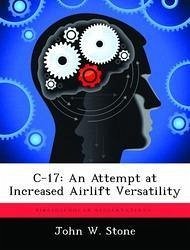Nicht lieferbar

C-17: An Attempt at Increased Airlift Versatility
Versandkostenfrei!
Nicht lieferbar
The Airlift Master Plan was developed as a guide for achieving long-term military airlift objectives. The cornerstone of the plan is the development and acquisition of the C-17. Although the C-17's 'direct-delivery' concept is new, the quest for expanded aircraft versatility has been continually pursued in previous airlift aircraft development programs. Thus the C-17 is not the first aircraft that has attempted to combine the traditionally separate roles of intertheater and intratheater airlift. The most recent attempt at developing an aircraft capable of meeting both strategic and tactical re...
The Airlift Master Plan was developed as a guide for achieving long-term military airlift objectives. The cornerstone of the plan is the development and acquisition of the C-17. Although the C-17's 'direct-delivery' concept is new, the quest for expanded aircraft versatility has been continually pursued in previous airlift aircraft development programs. Thus the C-17 is not the first aircraft that has attempted to combine the traditionally separate roles of intertheater and intratheater airlift. The most recent attempt at developing an aircraft capable of meeting both strategic and tactical requirements resulted in the C-5A. The C-5A failed to achieve the operational versatility predicted by its proponents and that failure has given rise to serious questions in regards to the C-17's probability of success in realizing its expanded airlift goals. A comparison of the C-5A and C-17 programs revealed the differences in concept formulation, design and acquisition strategy which will allow the C-17 to achieve its operational goals. The study further concludes that the 'direct-delivery' concept is a valid airlift objective and current technology permits the development of an aircraft with the performance capabilities necessary to fulfill that objective. This work has been selected by scholars as being culturally important, and is part of the knowledge base of civilization as we know it. This work was reproduced from the original artifact, and remains as true to the original work as possible. Therefore, you will see the original copyright references, library stamps (as most of these works have been housed in our most important libraries around the world), and other notations in the work. This work is in the public domain in the United States of America, and possibly other nations. Within the United States, you may freely copy and distribute this work, as no entity (individual or corporate) has a copyright on the body of the work. As a reproduction of a historical artifact, this work may contain missing or blurred pages, poor pictures, errant marks, etc. Scholars believe, and we concur, that this work is important enough to be preserved, reproduced, and made generally available to the public. We appreciate your support of the preservation process, and thank you for being an important part of keeping this knowledge alive and relevant.







